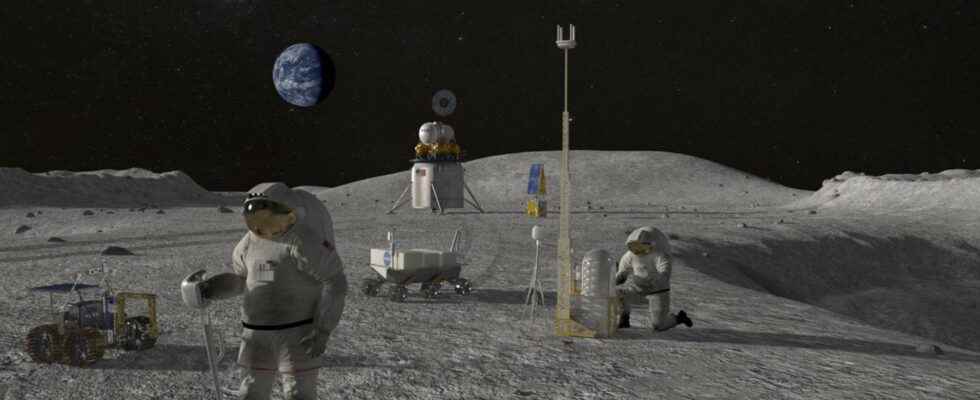In order to take astronauts between orbit and the surface of the Moon, NASA should select a second lander for the Artemis program. Its 2022 budget allows it. This lander, a competitor to SpaceX’s lunar Starship selected in 2021, will offer an alternative solution to NASA in terms of operational capabilities, redundancy and lack of dependence on a single supplier.
You will also be interested
[EN VIDÉO] Watch what the Artemis mission launches will look like At the end of 2021, NASA’s new heavy launcher, the SLS (Space Launch System), will launch the first Artemis I mission to the Moon. This is what its first flight will look like.
The Nasa has just received a budget of $24.04 billion for the fiscal year 2022, up about 3.3% compared to 2021. Although it is very slightly lower than what NASA wanted (24.8 billion), it allows almost all of its programs to be increased compared to the previous budget. In the field of human exploration of the Moon and the economic development oforbit bass, two programs, theHuman Landing System and the Commercial LEO Development receive, for the first time, all the funds requested by NASA. This is obviously a strong signal of the growing interest of the United States in these two objectives.
Following this budget announcement, NASA said that a second lander will be selected to take its astronauts between orbit and the surface of the Moon for an unmanned mission and a manned mission by 2026. and 2027. For now, only theSpaceX company had been chosen to develop a lander as part of the Artemis III mission, arousing strong criticism from many political and industrial representatives. Blue Origin and Dynetics, the two losing companies against SpaceXhad tried to do cancel the contract. The Congress and many political leaders have therefore reiterated their attachment to competition within the framework of the program Human Landing System. A second lander also has the advantage of not depending solely on the transport solutions marketed by SpaceX and of allowing redundancy of capacities with competing moon landing solutions.
Two alternative and competing moon landing solutions
In a few weeks, NASA will publish a call for tenders open to all American companies, and not only to competing projects from SpaceX, which had lost the first call for tenders. Namely the National Team of Blue Origin and Dynetics associated with Thales Alenia Space. This second call for tenders, which also confirms NASA’s strategy of going all commercial rather than a more conventional contractual approach where it would own the vehicles and intellectual property, will be very different from the first. The requirements will be reinforced compared to the call for tenders which framed the SpaceX HLS contract.
Concretely, this future lander will have to have better payload capacities, achieve longer lunar stays and be able to moor to the Gateway. To ensure a form of fairness between competing companies, NASA plans to strengthen the conditions imposed on SpaceX, adapting to the new requirements. In return, SpaceX was granted a second demonstration mission.
Support your independent scientific media: discover our subscription formulas!
4 good reasons to subscribe to Futura on Patreon:
- A site without any advertising from 3.29 euros per month.
- It is without commitment.
- Access to priority content, in preview, just for you.
- You support our business in the best possible way. A real motivation for us!
Interested in what you just read?
